Finn Juhl Important and unique sofa 1941 Fabric, Oregon pine. 76.2 x 198.1 x 82.6 cm. (30 x 78 x 32 1/2 in.) Produced by cabinetmaker Niels Vodder, Denmark. Together with copies of the original draft from Niels Vodder dated 15 February 1941.
Provenance Henrik and Kirsten Ravn, Denmark; Furniture, Lights and Decorative Arts, 6-8 June 2007, Bruun Rasmussen, Lot 579; Hemisphere, London Literature Esbjørn Hiort Finn Juhl Furniture, Architecture, Applied Art, Copenhagen, 1990, pp. 26 and 30 Catalogue Essay Among the 800 reliefs shaped by sculptor Hans Arp his painted wood ‘Constellations’ of the 1930s have the softest contours; they billow in their frames. He also called them ‘Fleurs-nuages’ – cloud flowers. For Arp, “the drifting cloud is an inexhaustible source of inspiration,” wrote Michel Seuphor in Hans Arp Die Reliefs. An able artist and an able writer, Arp titled an early collection of poems Le siège de l’air. Rather than ‘siege of air’, it would be pleasant to think he meant ‘seat of air’. What else could that be but a cloud? Historian Kirsten Dovey, recollecting long conversations with Finn Juhl before he died in 1989, noted his affinity for Arp. The latter’s sensuous forms must have been an inspiration to the young Danish designer, who studied architecture at the Royal Academy of Fine Art in Charlottenborg in the 1930s. Juhl’s play of mass and void—his shaped backrests and restless arms—are reminiscent of Arp’s voluptuous contours. Bernd Rau described Arp’s work as “suspended before an indeterminate, unframed background.” The same might be said of Juhl’s many chairs; he wrote in 1951: “A chair is not an applied art product in a room—it is a form and a space in itself.” In the 1930s, modernism meant many things to many people: Marcel Breuer favoured steel and glass; Danish designers, rejecting industrial processes, hand built chairs from wood (Finn Juhl pioneered the use of teak). Juhl and his compatriots inhabited common ground: sound technique, expert understanding of wood properties, and an aversion to superfluous decoration. That said, Juhl rejected the aloof rationalism and Georgian-inspired restraint promoted by his peers. Kristen Dovey wrote: “He threw off the historicist influence of English furniture, aligning his applied art with abstract sculpture, and African implements.” And forms in nature, one might add. Perched on maple legs, his famous ‘Pelican Chair’ (1940), stretches its wings as if striving for clouds. The following year he reached the present lot. Read More
Finn Juhl Important and unique sofa 1941 Fabric, Oregon pine. 76.2 x 198.1 x 82.6 cm. (30 x 78 x 32 1/2 in.) Produced by cabinetmaker Niels Vodder, Denmark. Together with copies of the original draft from Niels Vodder dated 15 February 1941.
Provenance Henrik and Kirsten Ravn, Denmark; Furniture, Lights and Decorative Arts, 6-8 June 2007, Bruun Rasmussen, Lot 579; Hemisphere, London Literature Esbjørn Hiort Finn Juhl Furniture, Architecture, Applied Art, Copenhagen, 1990, pp. 26 and 30 Catalogue Essay Among the 800 reliefs shaped by sculptor Hans Arp his painted wood ‘Constellations’ of the 1930s have the softest contours; they billow in their frames. He also called them ‘Fleurs-nuages’ – cloud flowers. For Arp, “the drifting cloud is an inexhaustible source of inspiration,” wrote Michel Seuphor in Hans Arp Die Reliefs. An able artist and an able writer, Arp titled an early collection of poems Le siège de l’air. Rather than ‘siege of air’, it would be pleasant to think he meant ‘seat of air’. What else could that be but a cloud? Historian Kirsten Dovey, recollecting long conversations with Finn Juhl before he died in 1989, noted his affinity for Arp. The latter’s sensuous forms must have been an inspiration to the young Danish designer, who studied architecture at the Royal Academy of Fine Art in Charlottenborg in the 1930s. Juhl’s play of mass and void—his shaped backrests and restless arms—are reminiscent of Arp’s voluptuous contours. Bernd Rau described Arp’s work as “suspended before an indeterminate, unframed background.” The same might be said of Juhl’s many chairs; he wrote in 1951: “A chair is not an applied art product in a room—it is a form and a space in itself.” In the 1930s, modernism meant many things to many people: Marcel Breuer favoured steel and glass; Danish designers, rejecting industrial processes, hand built chairs from wood (Finn Juhl pioneered the use of teak). Juhl and his compatriots inhabited common ground: sound technique, expert understanding of wood properties, and an aversion to superfluous decoration. That said, Juhl rejected the aloof rationalism and Georgian-inspired restraint promoted by his peers. Kristen Dovey wrote: “He threw off the historicist influence of English furniture, aligning his applied art with abstract sculpture, and African implements.” And forms in nature, one might add. Perched on maple legs, his famous ‘Pelican Chair’ (1940), stretches its wings as if striving for clouds. The following year he reached the present lot. Read More
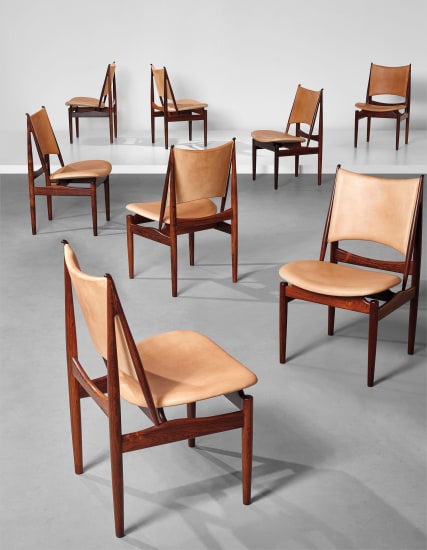
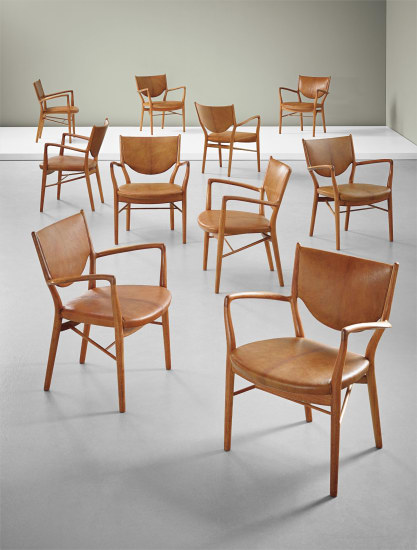
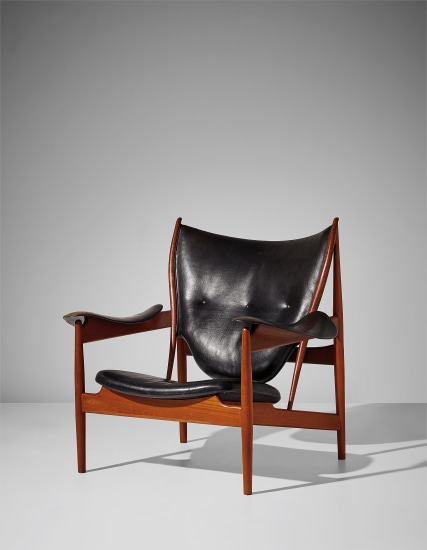
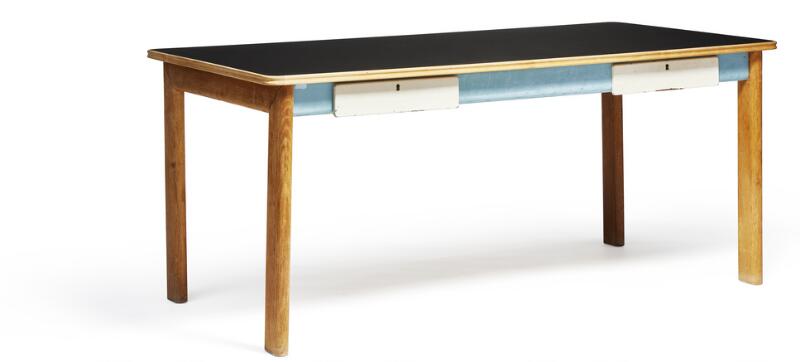
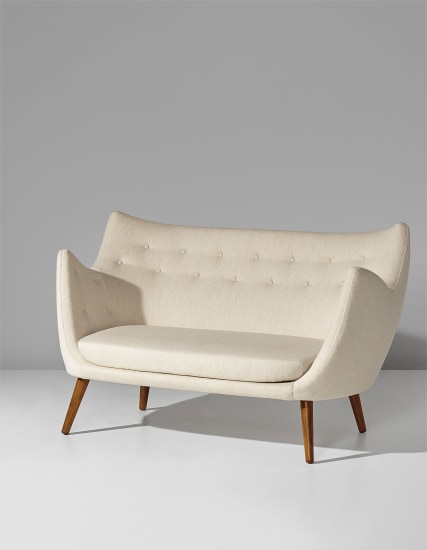
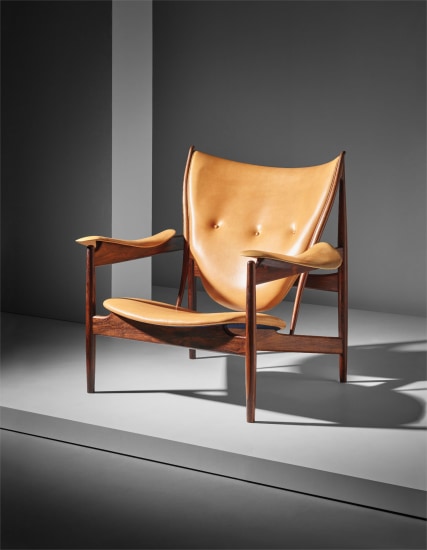
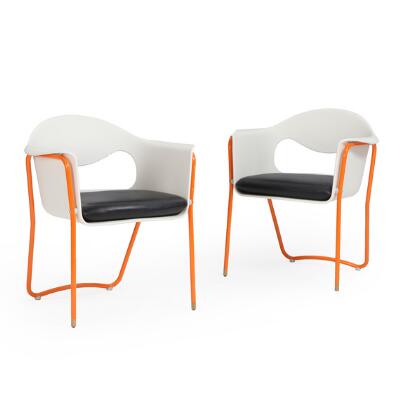


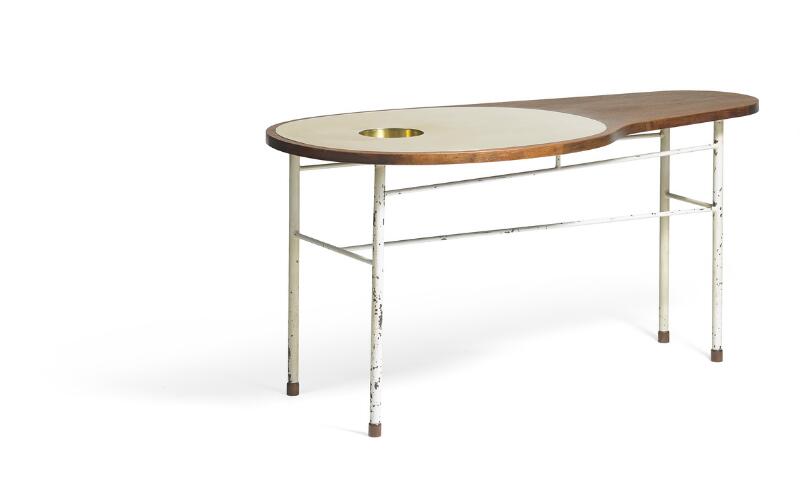



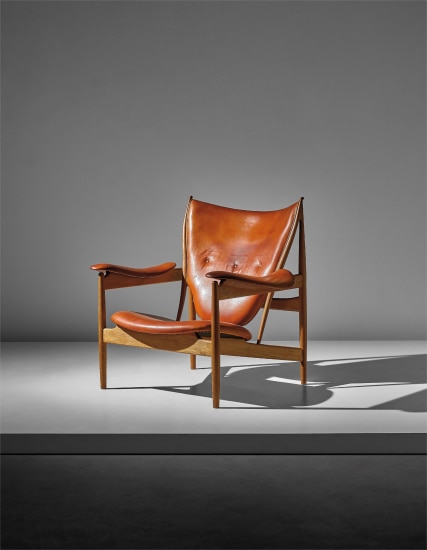
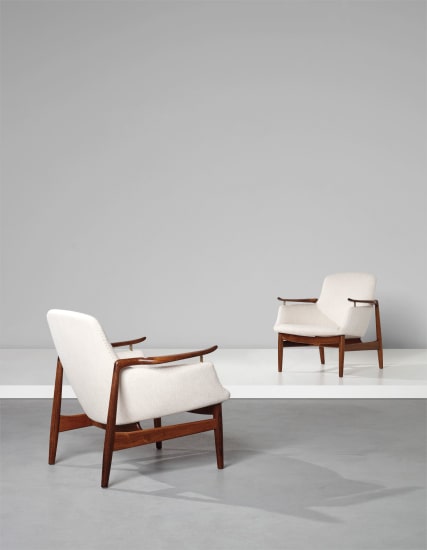
Testen Sie LotSearch und seine Premium-Features 7 Tage - ohne Kosten!
Lassen Sie sich automatisch über neue Objekte in kommenden Auktionen benachrichtigen.
Suchauftrag anlegen